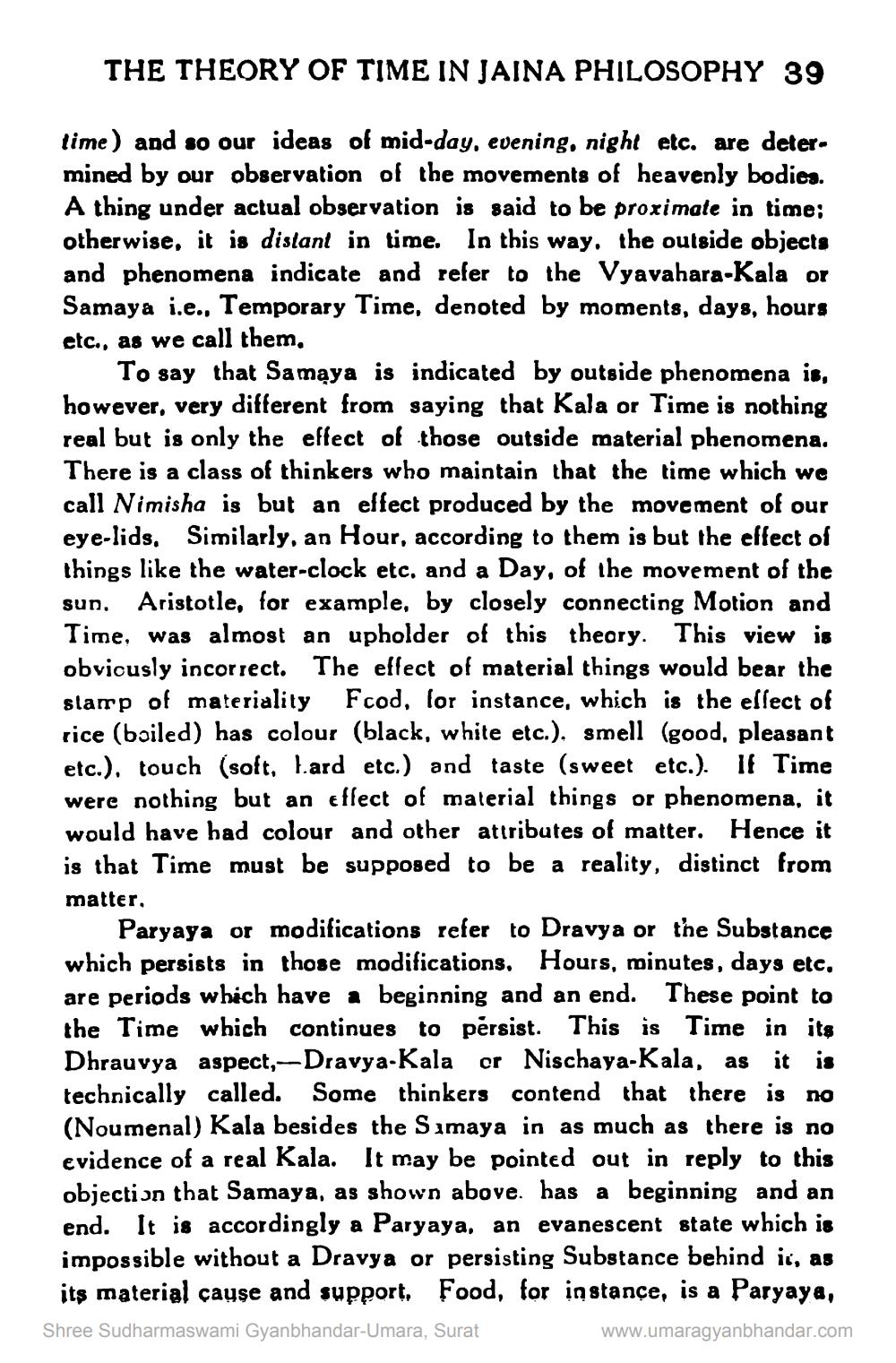________________
THE THEORY OF TIME IN JAINA PHILOSOPHY 39
time) and so our ideas of mid-day, evening, night etc. are determined by our observation of the movements of heavenly bodies. A thing under actual observation is said to be proximate in time; otherwise, it is distant in time. In this way. the outside objects and phenomena indicate and refer to the Vyavahara-Kala or Samaya i.e., Temporary Time, denoted by moments, days, hours etc., as we call them,
To say that Samaya is indicated by outside phenomena is, however, very different from saying that Kala or Time is nothing real but is only the effect of those outside material phenomena. There is a class of thinkers who maintain that the time which we call Nimisha is but an effect produced by the movement of our eye-lids. Similarly, an Hour, according to them is but the effect of things like the water-clock etc, and a Day, of the movement of the sun. Aristotle, for example, by closely connecting Motion and Time, was almost an upholder of this theory. This view is obviously incorrect. The effect of material things would bear the slamp of materiality Fcod, for instance, which is the effect of rice (boiled) has colour (black, white etc.). smell (good, pleasant etc.), touch (soft, lard etc.) and taste (sweet etc.). If Time were nothing but an effect of material things or phenomena, it would have had colour and other attributes of matter. Hence it is that Time must be supposed to be a reality, distinct from
matter.
Paryaya or modifications refer to Dravya or the Substance which persists in those modifications. Hours, minutes, days etc. are periods which have a beginning and an end. These point to the Time which continues to persist. This is Time in its Dhrauvya aspect,-Dravya-Kala or Nischaya-Kala, as it is technically called. Some thinkers contend that there is no (Noumenal) Kala besides the Simaya in as much as there is no evidence of a real Kala. It may be pointed out in reply to this objection that Samaya, as shown above. has a beginning and an end. It is accordingly a Paryaya, an evanescent state which is impossible without a Dravya or persisting Substance behind it, as its material cause and support, Food, for instance, is a Paryaya,
Shree Sudharmaswami Gyanbhandar-Umara, Surat
www.umaragyanbhandar.com




